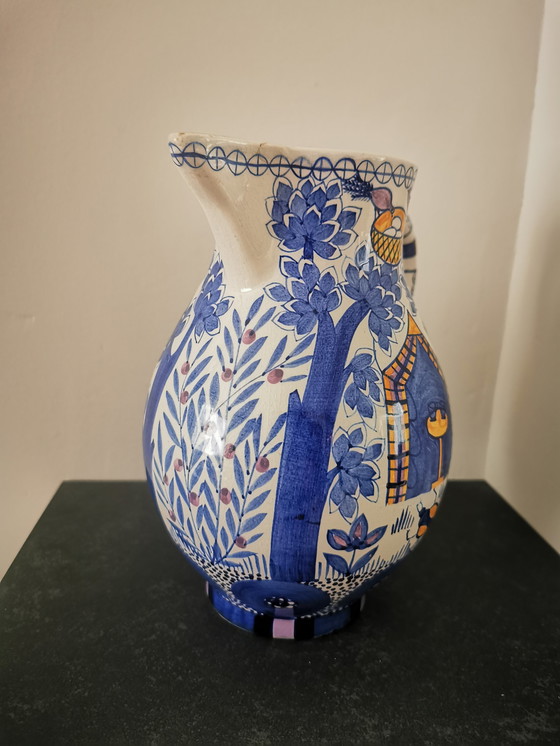Have it delivered hassle-freeBuyer protectionAll items curated by WhoppahDownload the Whoppah app here

Item not as advertised, money backAll items are curated and 100% authenticHave it delivered hassle-free or pick it up yourselfShop only from Trusted Sellers
Erica Van de Laar-Donkers
Product description
Often and Keramiekmuseum Velten
Decor: faience glaze, polychrome, hand-painted by Charlotte Hartmann 1920 - 1925. Paradise garden
Historical collection (“old stock”) of the Velten Kiln and Ceramics Museum
Not a single element on this record seems mechanical. The decor catches the eye and radiates an unusual lightness.
The artist Charlotte Hartmann was the first head of the painting department in the Velten sister factory of the stoneware factories of Hermann Harkorts, who achieved world fame in the 1920s with excellent stoneware tableware intended for use with artistic standards.
With her decorations, Hartmann was largely responsible for this success and for a much-noted revitalization of the material stoneware, which had sometimes been neglected and is characterized by the relatively low-fired, porous shards. As a utensil it therefore needs a glaze, but it also opens up a wide range of possibilities for refined, artistic design. Harnessing this scope and filling it with life was Hartmann's pioneering contribution.
Her narrative, imaginative, figurative stoneware decorations were very well received by ceramic experts. “Charlotte Hartmann directed the flow of all products from an industrial company to an artistic bed,” summarized the trade magazine Die Kachel- und Töpferkunst in 1922. Her decor 29, later called 'paradise garden decor', to which our current special exhibition is dedicated, was certainly one of the most striking, elaborate and even expensive examples.
The motif freely hand-painted by the artist himself with a flowing line, reveals the relationship with the “paradise garden decor”: In addition to her own artistic work, during her time at the company headquarters in Veltenevens she was responsible for the training of ceramic painters. [4] Hartmann was sometimes responsible for as many as 80 painters until she left the factory in Velten in December 1924. [5] She was succeeded as head of the painting department in 1925 by ceramist Elisabeth Dörr. [6]
After her marriage in 1924, Charlotte Hartmann bore the double name Hartmann-Solle. She moved to the town of Lemgo in North Rhine-Westphalia and from then on had only limited artistic activity. Only a few small-format tissues and watercolors are known from this period of the artist's work. [1] Last photo is a Terrine also made by her. This is also for sale in another advertisement
A small chip on the bottom. Considering the age, around 100 years, very acceptable. No further detriment
A small chip on the bottom. Considering the age, around 100 years, very acceptable. No further detriment
Specifications
ConditionVery goodColorsBlue, White, Yellow, BlackMaterialCeramicNumber of items1Height21 cmWidth20 cmDepth20 cmSigns of usageChipped













